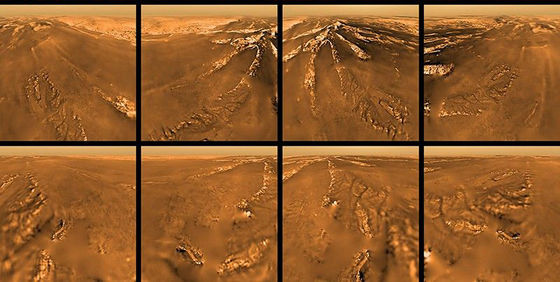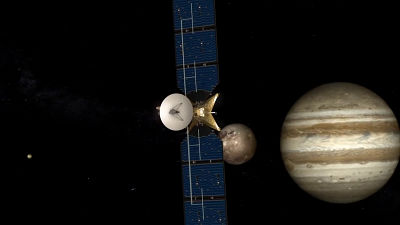Saturn's moon Titan reveals the potential for bonding of normally incompatible molecules

Research on Saturn's moon
Hydrogen cyanide and hydrocarbons mix on Titan | PNAS
https://www.pnas.org/doi/10.1073/pnas.2507522122

Unexpected discovery on Saturn's moon challenges our view on chemistry before life emerged
https://www.chalmers.se/en/current/news/k-unexpected-discovery-on-saturns-moon-challenges-our-view-on-chemistry-before-life-emerged/
Bizarre Crystals in Titan's Lakes Could Break a Fundamental Rule of Chemistry : ScienceAlert
https://www.sciencealert.com/bizarre-crystals-in-titans-lakes-could-break-a-fundamental-rule-of-chemistry
Titan is the only planet other than Earth where stable liquids have been confirmed to exist on its surface, and its 'lakes' consist of liquid methane and ethane. These liquid hydrocarbon lakes are thought to contain the complex chemical reactions necessary for the emergence of life, and are thought to help us understand the conditions under which life could potentially arise.
Saturn's moon 'Titan' has an environment where it is possible to investigate whether life can arise naturally from inorganic matter - GIGAZINE

One particularly important building block for the emergence of life is hydrogen cyanide (HCN), which is abundant in Titan's atmosphere and surface and, under the right conditions, could form the building blocks of life, such as nucleic acid bases and amino acids.

NASA researchers were investigating the behavior of substances such as hydrogen cyanide in Titan's extremely cold environment. In an environment of approximately -180 degrees Celsius, which corresponds to Titan's surface temperature, hydrogen cyanide crystallizes, while methane and ethane exist as liquids and gases. After completing experiments at Titan's surface temperature and analyzing the resulting mixture, the researchers discovered that the mixture took on a different form than in a normal environment. They then contacted a research team led by Fernando Izquierdo Ruiz of Chalmers University of Technology in Sweden to conduct theoretical and experimental collaboration.
Normally, the polar molecule hydrogen cyanide and the non-polar molecules methane and ethane have weak interactions and rarely mix stably within a crystal lattice. Therefore, it is a basic understanding in chemistry that 'mixing of polar and non-polar substances rarely occurs' at room temperature.
However, when they grew hydrogen cyanide crystals at approximately -180°C and then introduced liquid hydrocarbons such as methane, ethane, propane, and butane into the crystals, they recorded molecular vibrations using
These experimental results contradict the fundamental law of chemistry that 'like dissolves like' (polar and non-polar molecules are immiscible), and show that the coexistence of polar and non-polar molecules, which hardly occurs at room temperature, becomes possible at extremely low temperatures by being incorporated into the lattice.

'The discovery of an unexpected interaction between these substances could have implications for our understanding of Titan's geology and its strange features, such as lakes, oceans, and sand dunes,' said Martin Lahm, a chemist at Chalmers University of Technology. The researchers say their next step is to discover other molecules that could form co-crystals with hydrogen cyanide under the right conditions.
Related Posts:
in Science, Posted by log1e_dh







